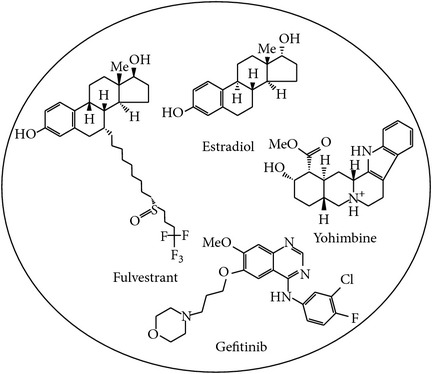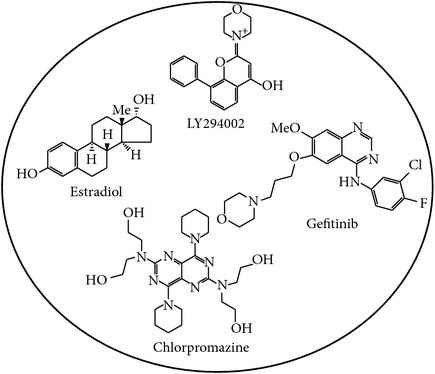Table 1.
The multiple drug design strategy and potential multiple drug combination for stage 1 and 4 cancers.
| Stage 1 bladder cancer | Stage 4 bladder cancer | |
|---|---|---|
| The highly expressed genes for potential inhibition strategy of multiple drug design | ADRM1, COPS5, PSMD8, SUMO2, CALR, PDIA3, DNAJB11, HSPA5, RPN1, CUL1, HSP90B1, KPNA2, PSMD12, ECT2, TK1, TUBA1C, HN1, and ENO1 | ADRM1, COPS5, PSMD8, SUMO2, RNF126, CALR, PDIA3, DNAJB11, HSPA5, RPN1, HSP90AA1, HSPA1B, METTL23, RARRES3, KPNA2, PSMD12, ECT2, JUN, TK1, TUBA1C, HN1, and ENO1 |
|
| ||
| The suppressed genes for potential activation strategy of multiple drug design | UBC, JUN, RARRES3, and FOS | BCL3, FOS, UBC, and GTF2A1 |
|
| ||
| The nondifferentially expressed genes to avoid side-effect of multiple drug design | BAG6, HUWE1, PAAF1, PSMD10, FAF2, PCYT1A, and PSMD10 | BAG6, HUWE1, PAAF1, PSMD10, FAF2, PCYT1A, and PSMD10 |
|
| ||
| The potential multiple drug combination |

|

|
